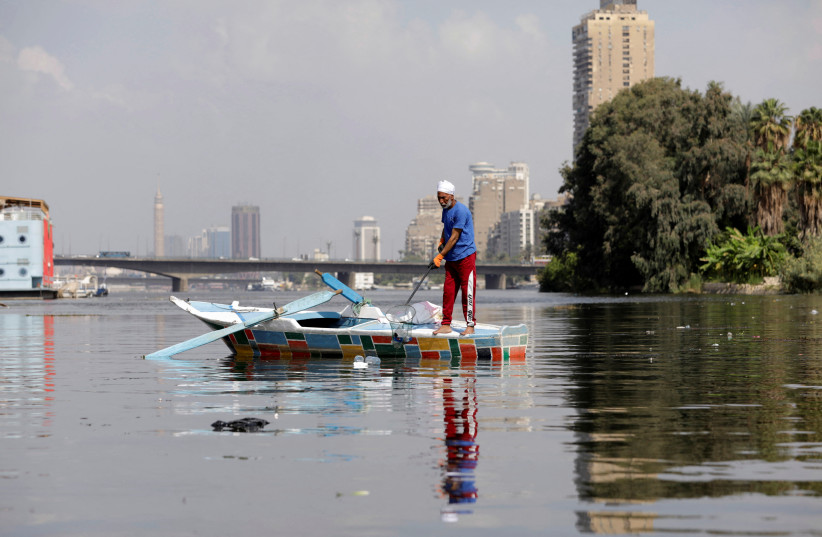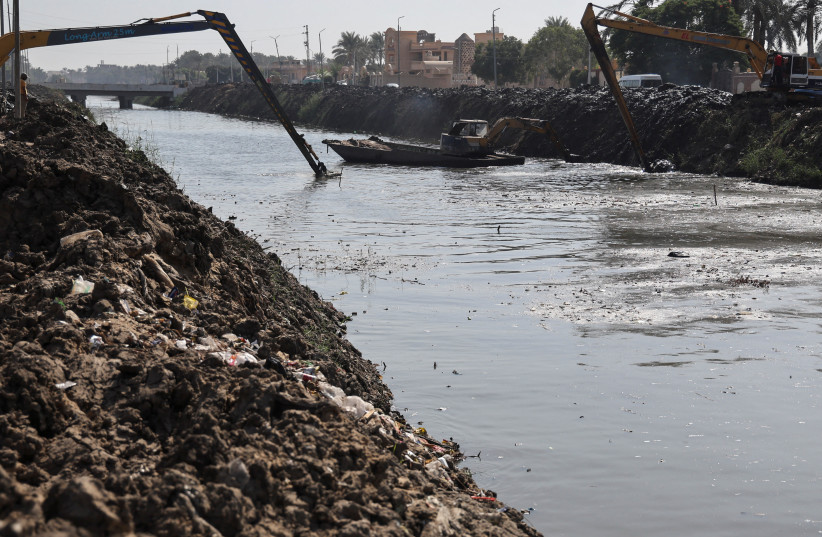Heavy metal pollution poses a great danger to water and birds at the iconic Nile River Delta.
Published: MARCH 10, 2023 1

(photo credit: REUTERS/MOHAMED ABD EL GHANY)
Even before the ancient Israelis lived nearby, the Nile River has for millennia irrigated otherwise-arid Egypt and 10 other African countries that it runs through or that lie on its borders. Yet today, the body of water suffers from large-scale heavy-metal pollution, coastal erosion and seawater intrusion, which pose an existential threat to the river delta and endanger 60 million Egyptians – about twice the population of Texas – who depend on its resources for every facet of life.
This pollution also endangers the millions of migrating birds including raptors, waterbirds and Palearctic species that regularly fly northward during the non-breeding season) and stop over at the Nile to rest along the East African flyway.
So warn researchers at the University of Southern California’s Viterbi School of Engineering, led by Egyptian scientist Dr. Essam Heggy who published their research in the American Geophysical Union journal Earth’s Future. The study was entitled “Irreversible and large-scale heavy metal pollution arising from increased damming and untreated water reuse in the Nile Delta”
The Nile River is the longest river on Earth, crossing four different climatic zones and nine different rainfall regimes and extending for more than 6,650 kilometers from Equatorial Africa to the Mediterranean Sea. Its annual flooding delivered both freshwater, sediments and fertile soil required for establishing an agricultural society and several ecosystem services for more than 5,000 years.
The impact of the pollution is especially pronounced in Egypt, the most populous and arid nation downstream of the Nile, which depends entirely on the river as its only source of water for drinking and crop irrigation. The country currently faces one of the highest water-budget deficits in Africa after decades of compensating for dwindling water supplies with intensive, large-scale wastewater reuse, the consequences of which have been understudied until now.
Excavators are seen on a clean up operation at sides of canal which flows into the River Nile in Giza, Egypt, October 4, 2022. (credit: REUTERS/AMR ABDALLAH DALSH)
“You have roughly the combined populations of California and Florida living in a space the size of the state of New Jersey that is increasingly polluted by toxic heavy metals.”Dr. Essam Heggy
“You have roughly the combined populations of California and Florida living in a space the size of the state of New Jersey that is increasingly polluted by toxic heavy metals,” said Heggy. “Today, the civilization that thrived in a scenic waterscape for over 7,000 years must face the reality of this irreversible large-scale environmental degradation.”
For the study, American and Egyptian researchers analyzed grain size and pollution levels of eight heavy metals in samples of bottom sediment collected from two branches of the Nile River Delta. They found that the sediment is highly polluted by heavy metals including cadmium, nickel, chromium, copper, lead and zinc.
Contaminants primarily come from untreated agricultural drainage and municipal and industrial wastewater, they noted. “Without proper treatment of recycled water, concentrations of heavy metals increase and are permanently embedded in the riverbed, unlike organic pollutants which naturally degrade over time.”
Dams exacerbate heavy metal pollution
Heavy metal concentrations could be worsened by increased damming of the Nile, they added. “Mega-dams built upstream disrupt the river’s natural flow and sediment flux and thus adversely affect its ability to flush contaminants out into the Mediterranean Sea, leaving toxins to build up in bottom sediment over time.”
Much of the heavy metal contamination is irreversible, the researchers said, but science-based conservation measures suggested by the study can slow environmental degradation and hopefully recover the Nile River Delta ecosystem.
“The aggravating water stress and the rapid population growth in Egypt, reaching above 100 million, have put local authorities in a dilemma whether to provide sufficient fresh water for the thirsty agricultural sector to secure the food supply through reusing untreated agricultural drainage water or to preserve the health of the Nile River,” said Abotalib Abotalib, a postdoctoral researcher at USC Viterbi and co-author of the study. “The balance is challenging, and the consequences of both choices are measurable.”
“Our study underscores the need for more research on the environmental impacts of untreated water recycling and the change in river turbidity under increased upstream damming of the Nile,” Heggy added. “Continued research with more sampling campaigns in this area could inform future conversations and collaborations among nations of the Nile River Basin, who have a shared interest toward maintaining a healthy Nile River system.”
https://www.jpost.com/environment-and-climate-change/article-733959

